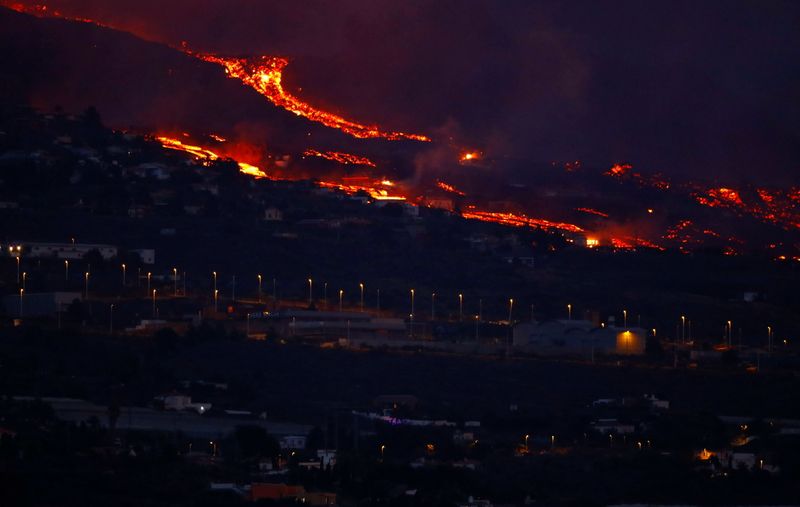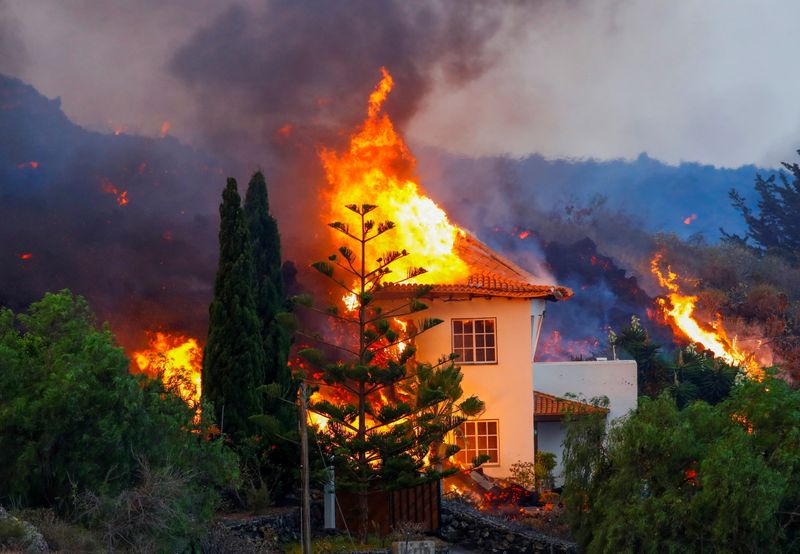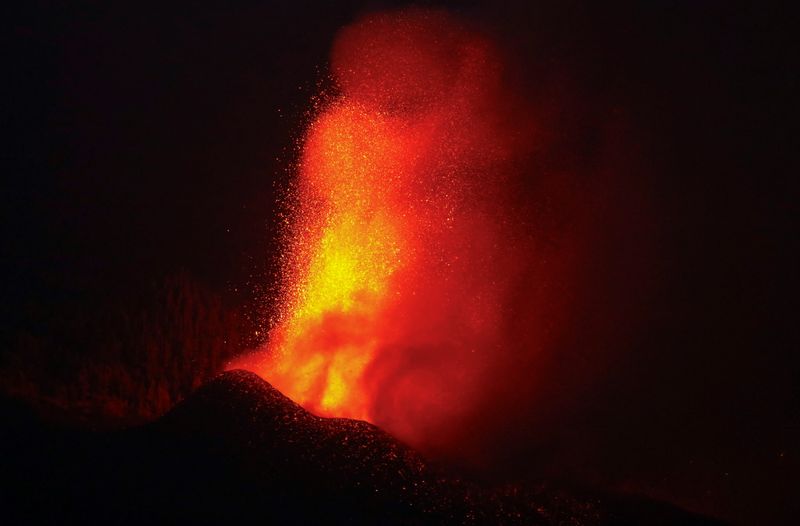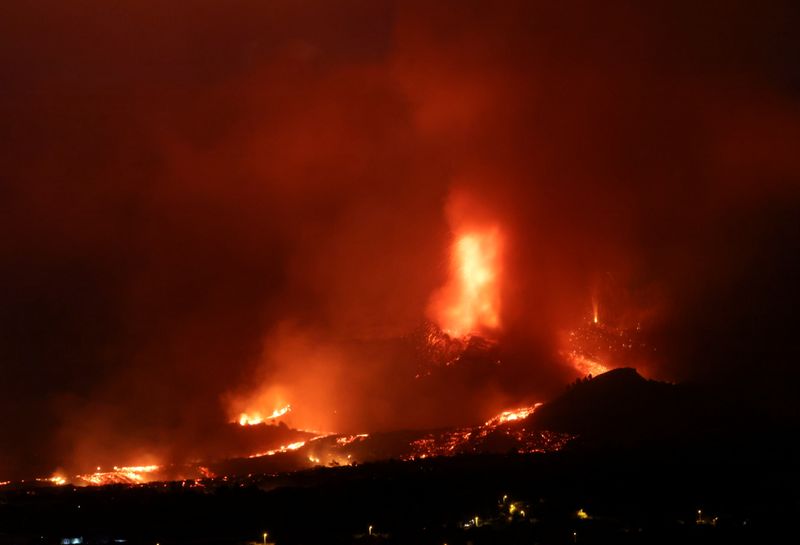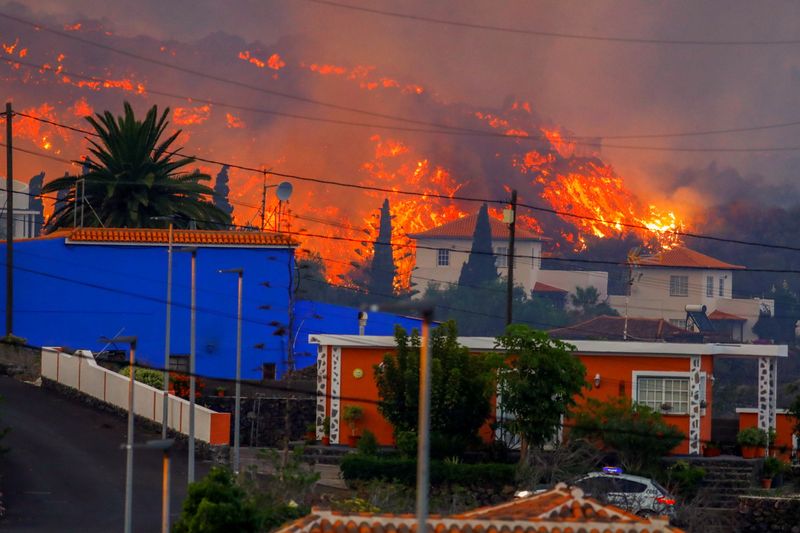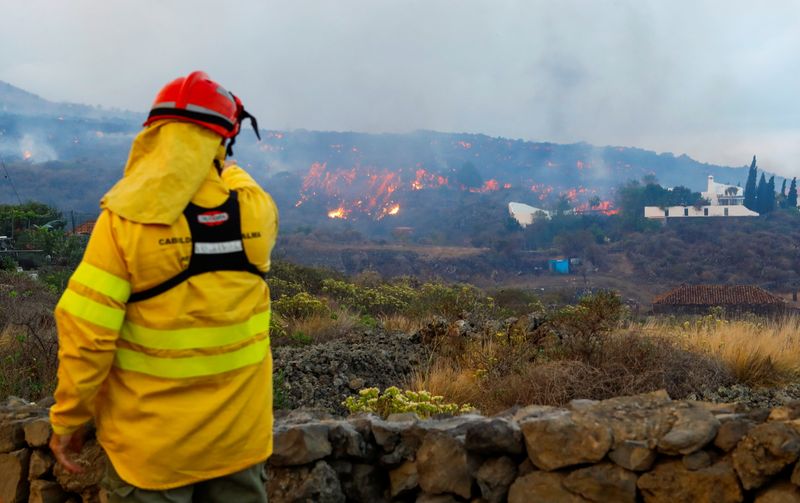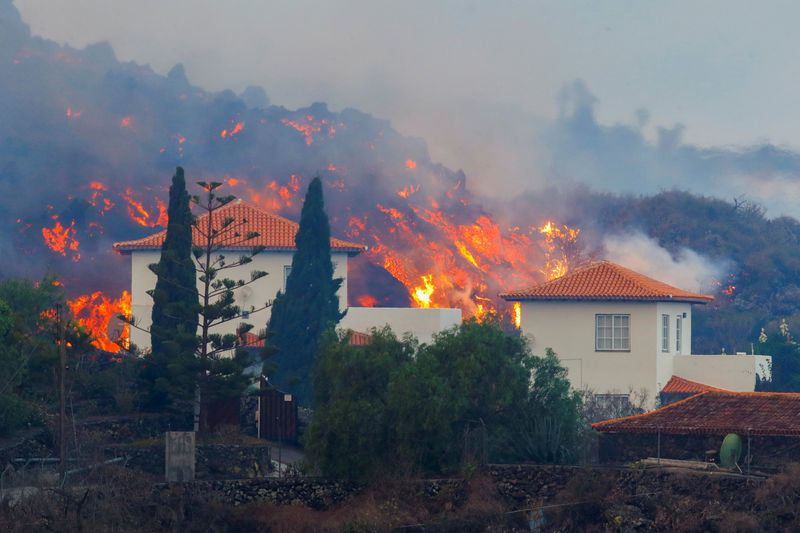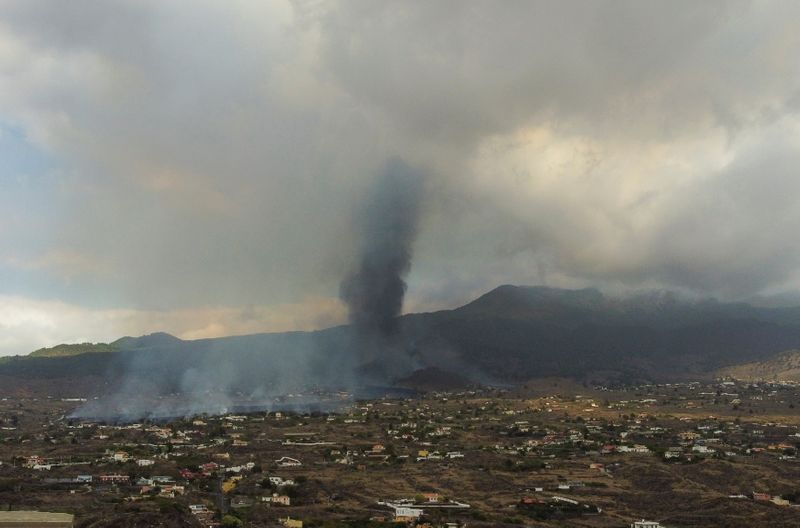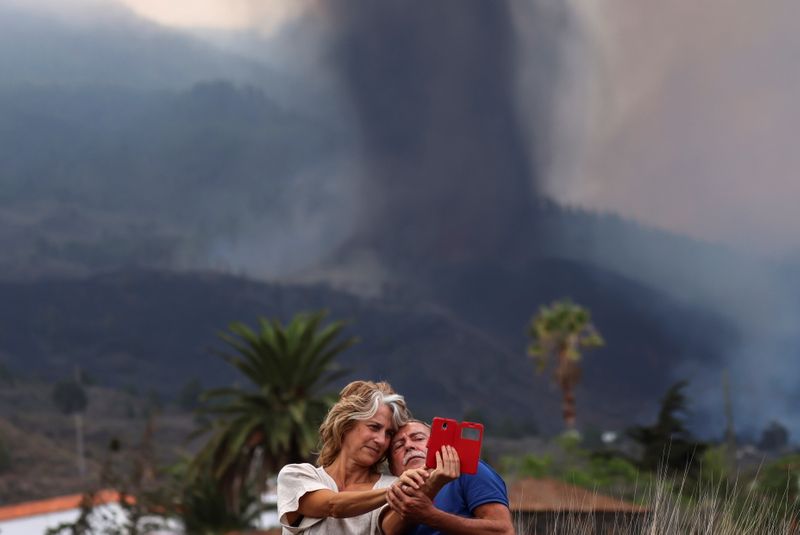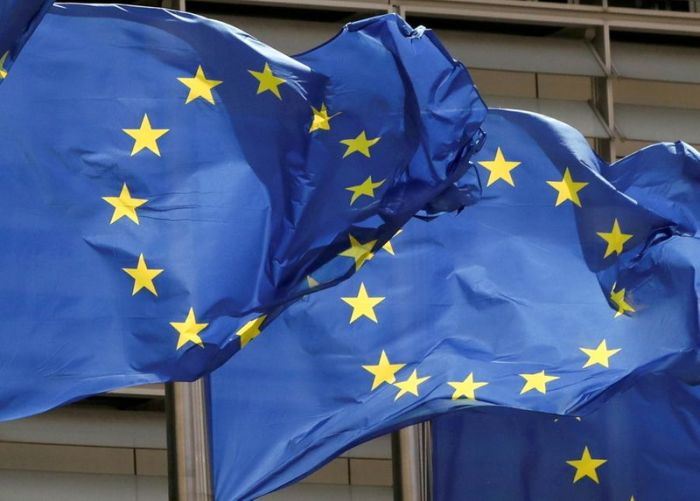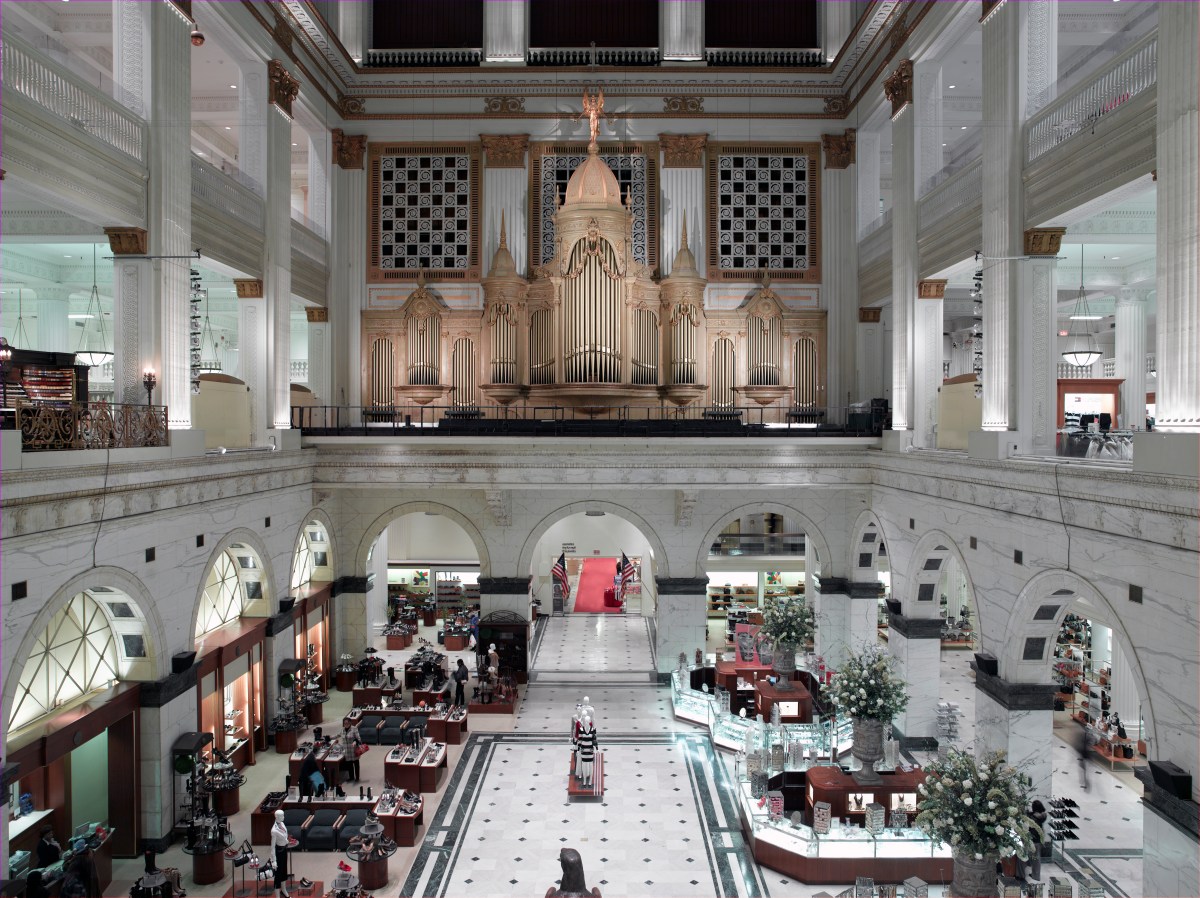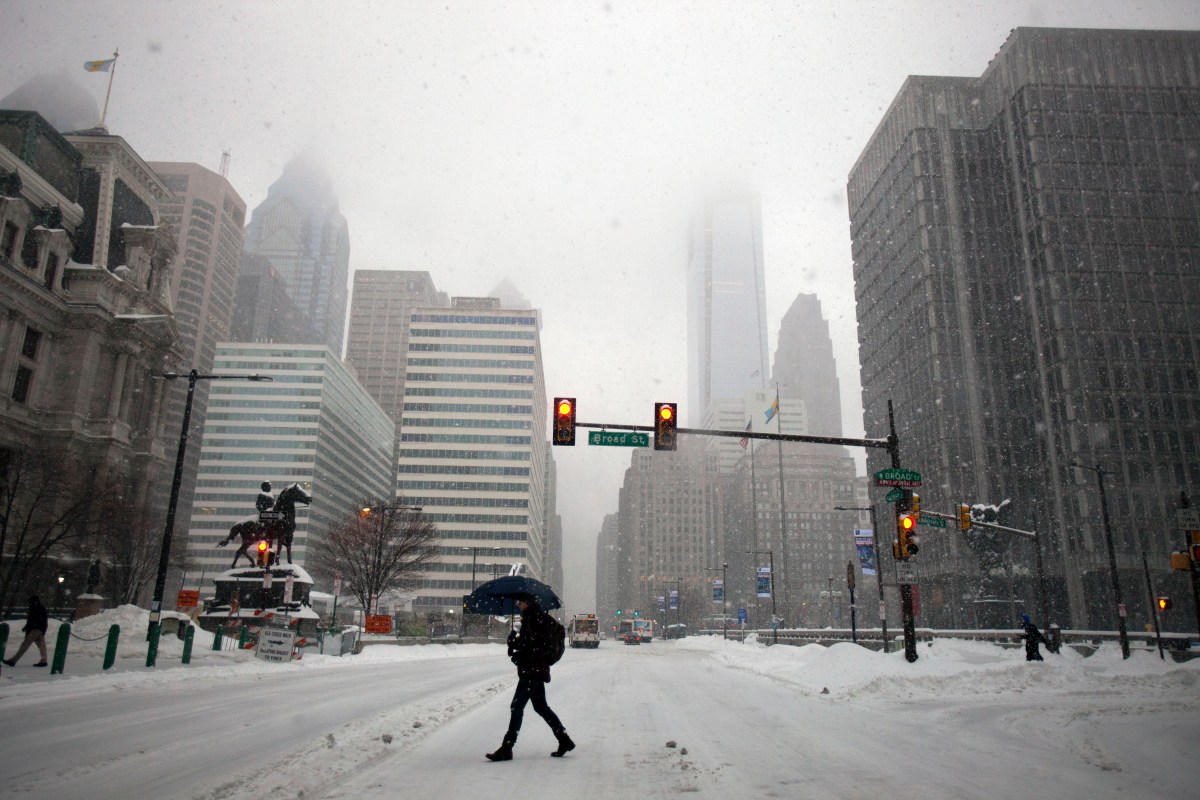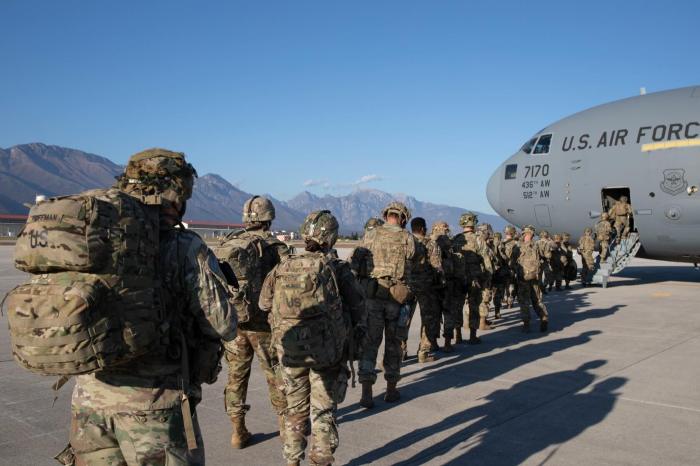LA PALMA, Spain (Reuters) -Lava flowing from Spain’s Canary Islands’ first volcanic eruption in 50 years has forced the evacuation of 5,500 people and destroyed around 100 houses but the streams were advancing slower than originally predicted, authorities said on Monday.
The flow of molten rock will not reach the Atlantic Ocean on Monday evening as earlier estimated, an official said. Experts say that if and when it does, it could trigger more explosions and clouds of toxic gases.
“The movement of lava is much slower than it was initially … There has not been a large advance during the day,” local emergency coordinator Miguel Angel Morcuende told a press briefing on Monday evening. He said the stream had made its way about halfway to the coast.
A new stream of lava erupted from the volcano late on Monday, prompting the evacuation of residents in the town of El Paso, the regional emergency agency wrote on Twitter.
The volcano first erupted on Sunday, shooting lava hundreds of metres into the air, engulfing forests and sending molten rock towards the ocean over a sparsely populated area of La Palma, the northwesternmost island in the Canaries archipelago.
No fatalities or injuries have been reported but drone footage captured two tongues of black lava cutting a devastating swathe through the landscape as they advanced down the volcano’s western flank towards the sea.
A Reuters witness saw the flow of molten rock slowly tear its way through a house in the village of Los Campitos, igniting the interior and sending flames through the windows and onto the roof.
Around 100 homes have been affected by the volcano’s eruption, said regional emergency official Jorge Parra, adding that residents should not fear for their safety if they follow authorities’ recommendations.
Six roads on the island were closed, officials said.
Regional leader Angel Victor Torres said the damage would be substantial. “It is still active and will continue to be active for the next few days,” he added.
“It was horrible,” said Eva, a 53-year old tourist from Austria. “We felt the earthquake, it started in the morning … Then at three in the afternoon the lady from our house came and said you have to pack everything and leave quickly.”
“We’re happy to go home now,” she said at the airport, boarding a flight back home after cutting her trip short.
Tourism Minister Reyes Maroto said the eruption was “a wonderful show” which would attract more tourists to the tourism-dependent archipelago – comments that were criticised by the opposition at a time when many residents have lost their homes.
Some of the tourists at the airport disagreed with Maroto. “We want to leave as fast as possible,” said Wienard, a 55-year- old social worker from Salzburg.
But at least one visitor was happy.
“I felt like a little child inside, very excited,” said Kabirly, 26, a market researcher from Belgium. “It was also my birthday yesterday so it was sort of a candle on the island cake!”
About 360 tourists were evacuated from a resort in La Palma following the eruption and taken to the nearby island of Tenerife by boat early on Monday, a spokesperson for ferry operator Fred Olsen said. A total of more than 500 tourists had to leave their hotels.
Anticipating reduced visibility, maritime authorities on Monday closed down shipping to the west of the island.
La Palma had been on high alert after thousands of tremors were reported over a week in Cumbre Vieja, which belongs to a chain of volcanoes that last had a major eruption in 1971 and is one of the Canaries’ most active volcanic regions.
Prime Minister Pedro Sanchez visited some affected areas and met officials on Monday, and later took to Twitter to praise the emergency personnel’s response.
Airspace around the Canaries has remained open with no visibility problems, the Enaire civil air authority said after a local airline cancelled four flights between islands.
(Reporting by Borja Suarez and Marco Trujillo in La Palma and Inti Landauro, Emma Pinedo, Corina Pons, Nathan Allen and Joan Faus in Madrid; Writing by Ingrid Melander, Nathan Allen and Joan Faus; Editing by Angus MacSwan, Janet Lawrence and Giles Elgood)

